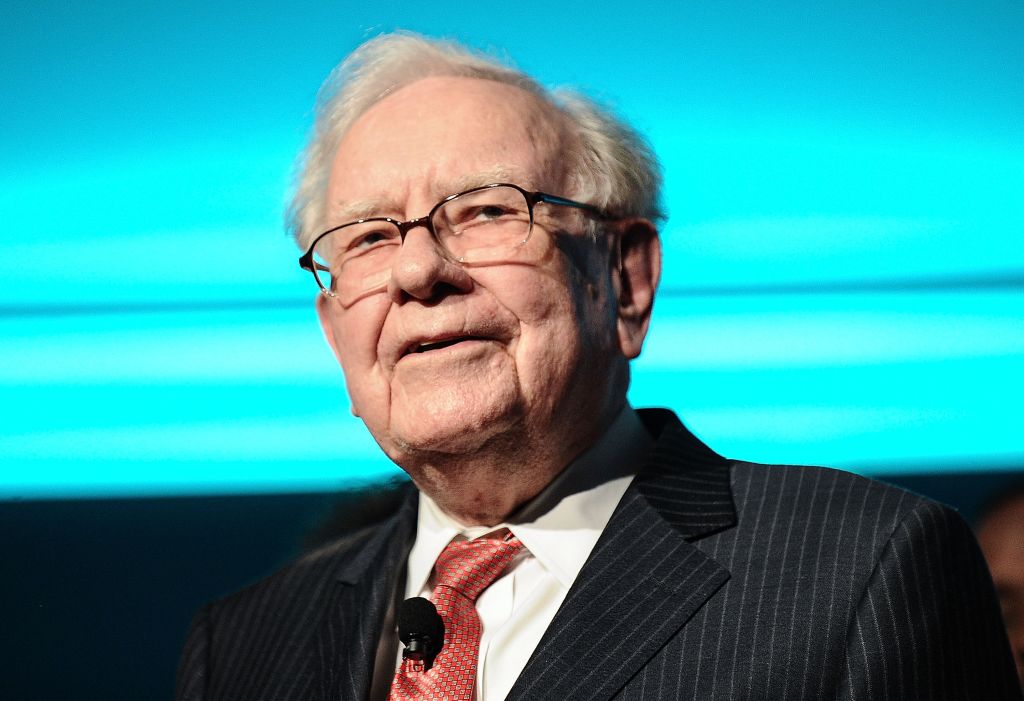5 Spinoff Stocks to Cash In On
You can often find bargains when companies jettison a division.

There are few sure things in picking stocks. But if you want an investment that puts the odds in your favor, consider spinoffs.
When big companies split into pieces, the parts often become more valuable than when they were combined. Studies conducted by a range of researchers, from JPMorgan to Penn State, have found similar results. For instance, a McKinsey study of 300 companies spun off between 1988 and 1998 found that during the two-year period following the separation, stocks of the new firms outpaced the market by an average of ten percentage points. Other studies found that both the parents and the new spin-offs outperformed market averages, although the percentages varied dramatically from study to study.
What makes the returns enviable, and what makes the statistics a little fuzzy, is the same—namely, spin-offs are rare. Roughly 30 companies a year, on average, announce plans to peel off a piece of their business and plunk it into the hands of shareholders in the form of newly minted shares. Once a company announces a spinoff, it can take a year or more to complete.
From just $107.88 $24.99 for Kiplinger Personal Finance
Become a smarter, better informed investor. Subscribe from just $107.88 $24.99, plus get up to 4 Special Issues

Sign up for Kiplinger’s Free Newsletters
Profit and prosper with the best of expert advice on investing, taxes, retirement, personal finance and more - straight to your e-mail.
Profit and prosper with the best of expert advice - straight to your e-mail.
The plus side of rarity is that a spinoff, much like an artistic genius, can be misunderstood and neglected. Analysts often stop covering the parent company because a divestiture can change it so much, and it may take years before the spinoff attracts its own following. Moreover, institutional investors often dump the shares of the spinoff for reasons unrelated to the company’s value or prospects. Managers of index funds, for instance, can’t own shares in companies that are not in their index, and a spinoff is not likely to qualify. That kind of automatic selling can depress a spinoff’s shares and create bargains for investors.
A good spinoff can also ignite the sort of entrepreneurial zeal that leads to better-than-average market returns. “If you have an asset that’s not being managed or properly valued by the parent, it can make sense to let that piece of the company pursue its own destiny,” says Joe Cornell, owner of Spin-Off Research, in Chicago. “The division goes from being a subsidiary, begging its parent for money and attention, to a separate entity with its own management, board and strategy. That cranks up the entrepreneurial feel, and improves the company’s performance and stock.”
Of course, if every spinoff were a great deal, this corner of the market would not be neglected. Some spinoffs get saddled with so much debt that they have little opportunity to thrive. Others are simply in unprofitable businesses with limited prospects. And even in the best of circumstances, investors need to take the leap of faith that a previously underperforming company will thrive when broken from a parent—or that the parent will thrive without the unit it has cast aside.
Still, you can profit by buying either the parent or the new stock, or both, says John Keeley Jr., chief investment officer at Keeley Asset Management, a Chicago firm that specializes in spinoffs.
We think these five new or soon-to-be-split stocks, divided among three strategies, are attractive. Prices are as of May 4.
Buy the Spinoff
Genie Energy (symbol GNE) emerged from IDT Corp. (IDT), primarily a telecom company, last October. The small, Newark, N.J.–based company sells power to small businesses and develops shale-oil projects in Colorado and Israel. Last year, Genie earned $850,000, or 4 cents a share, on revenues of $206 million. In March, a group of insiders started snapping up Genie shares—a sign, says Cornell, that the people who know the company best think the stock has potential. At a share price of $8, the stock has lost 28% since early February and now carries a market value of only $179 million. But as of the end of 2011, Genie had $102 million in cash, or $4.45 per share, and no debt. Cornell thinks investors are drastically undervaluing Genie’s potential. He says the shares are worth $15.75—almost double today’s price.
Buy the Spinner
In some instances, a company can become more attractive after unloading divisions. Consider Ralcorp Holdings (RAH), which broke off Post Foods (POST) in February. Post Foods kept the brand-name cereal business (including Raisin Bran, Honey Bunches of Oats and Grape-Nuts), while Ralcorp kept the generic food business, which makes pastas and frozen dough, among other things.
In this case, the “stub” (the parent company minus the spinoff) is the more valuable piece, says Keeley. He says that Ralcorp is likely to grow faster without the weight of heavily marketed name brands. Indeed, in the October–December quarter, Ralcorp’s operating profits from “branded cereals”—Post’s piece—dropped 30%, while operating profits from “other” cereals climbed 28%. Profits from snacks and sauces showed a 10% gain, and earnings from frozen bakery products soared 47%. Analysts, on average, expect Ralcorp’s earnings to advance 8% annually over the next few years. But Keeley thinks the St. Louis firm’s growth will accelerate without the drag of Post and that Ralcorp’s current share price of $72 will look like a bargain in retrospect.
ConocoPhillips (COP) split off Phillips 66 (PSX), its refining and chemical operations, on May 1. By doing so, Conoco rids itself of a low-profit business, and it can now concentrate on exploration and production, a segment that has historically accounted for about 80% of its profits. At $53, ConocoPhillips sells for less than 8 times estimated 2012 profits of $6.39 per share. That’s too cheap, says Cornell, who expects the Houston-based firm to be leaner and more profitable in the future. He thinks Conoco is worth $73 a share today.
Buy Ahead of the Breakup
If you think the sum of the parts is worth more than the whole, invest after a company has announced a spinoff but before the deal has taken place. One such opportunity lies with Kraft Foods (KFT). Later this year, it plans to jettison its grocery business, which generates $19 billion a year in sales with such products as Kraft cheeses, Maxwell House coffee, Miracle Whip salad dressing and Planters peanuts. The spinoff will keep the Kraft name. The remaining company, which is expected to be called Mondelez International, will concentrate on snack foods, including Oreo cookies, Ritz and Wheat Thins crackers, and Cadbury chocolate. Mondelez will boast some $35 billion in annual sales.
Breaking Kraft in two will allow the grocery company to focus on improving its profit margins, while the snack-food company can devote its attention to growth, particularly in emerging markets. Kraft shares sell for $39, or 16 times estimated 2012 earnings, but S&P Capital IQ analyst Tom Graves believes the Northfield, Ill., company will be worth $44 a share when broken in two.
Covidien PLC (COV), itself a spinoff of Tyco International, announced in December that it will break in two later this year, dividing the Irish company’s drug and medical-device businesses. Terms of the deal are not yet known, but Morningstar analyst Alex Morozov believes that the breakup will unleash the value in both divisions. Morozov thinks medical devices have more growth potential but says the pharmaceutical unit has been neglected and should prosper once allowed to chart its own course. At $54, Covidien sells for 13 times estimated 2012 earnings, which Morozov thinks undervalues the company. He suggests investing in Covidien today and thinks the pieces will be worth a combined $76 a share within a year.
Kathy Kristof is a contributing editor to Kiplinger’s Personal Finance and author of the book Investing 101. Follow her on Twitter. Or email her at practicalinvesting@kiplinger.com.
Kiplinger's Investing for Income will help you maximize your cash yield under any economic conditions. Download the premier issue for free.
Profit and prosper with the best of Kiplinger's advice on investing, taxes, retirement, personal finance and much more. Delivered daily. Enter your email in the box and click Sign Me Up.

-
 What Science Reveals About Money and a Happy Retirement
What Science Reveals About Money and a Happy RetirementWhether you’re still planning or already retired, these research-based insights point the way to your best post-work life.
-
 7 Retirement Planning Trends: What They Mean for You in 2026
7 Retirement Planning Trends: What They Mean for You in 2026From government shutdowns to market swings, the past 12 months have been nothing if not eventful. The key trends can help you improve your own financial plan.
-
 What Defines Wealth? A Christmas Tale of Legacy vs Possession
What Defines Wealth? A Christmas Tale of Legacy vs PossessionThe tale of Good King Wenceslas shows that true wealth is built through generosity, relationships and the courage to act kindly no matter what.
-
 If You'd Put $1,000 Into Coca-Cola Stock 20 Years Ago, Here's What You'd Have Today
If You'd Put $1,000 Into Coca-Cola Stock 20 Years Ago, Here's What You'd Have TodayEven with its reliable dividend growth and generous stock buybacks, Coca-Cola has underperformed the broad market in the long term.
-
 If You Put $1,000 into Qualcomm Stock 20 Years Ago, Here's What You Would Have Today
If You Put $1,000 into Qualcomm Stock 20 Years Ago, Here's What You Would Have TodayQualcomm stock has been a big disappointment for truly long-term investors.
-
 If You'd Put $1,000 Into Home Depot Stock 20 Years Ago, Here's What You'd Have Today
If You'd Put $1,000 Into Home Depot Stock 20 Years Ago, Here's What You'd Have TodayHome Depot stock has been a buy-and-hold banger for truly long-term investors.
-
 If You'd Put $1,000 Into Bank of America Stock 20 Years Ago, Here's What You'd Have Today
If You'd Put $1,000 Into Bank of America Stock 20 Years Ago, Here's What You'd Have TodayBank of America stock has been a massive buy-and-hold bust.
-

 If You'd Put $1,000 Into Oracle Stock 20 Years Ago, Here's What You'd Have Today
If You'd Put $1,000 Into Oracle Stock 20 Years Ago, Here's What You'd Have TodayORCL Oracle stock has been an outstanding buy-and-hold bet for decades.
-
 If You'd Put $1,000 Into Sherwin-Williams Stock 20 Years Ago, Here's What You'd Have Today
If You'd Put $1,000 Into Sherwin-Williams Stock 20 Years Ago, Here's What You'd Have TodaySherwin-Williams stock has clobbered the broader market by a wide margin for a long time.
-
 If You'd Put $1,000 Into UnitedHealth Group Stock 20 Years Ago, Here's What You'd Have Today
If You'd Put $1,000 Into UnitedHealth Group Stock 20 Years Ago, Here's What You'd Have TodayUNH stock was a massive market beater for ages — until it wasn't.
-
 If You'd Put $1,000 Into Berkshire Hathaway Stock 20 Years Ago, Here's What You'd Have Today
If You'd Put $1,000 Into Berkshire Hathaway Stock 20 Years Ago, Here's What You'd Have TodayBerkshire Hathaway is a long-time market beater, but the easy money in BRK.B has already been made.